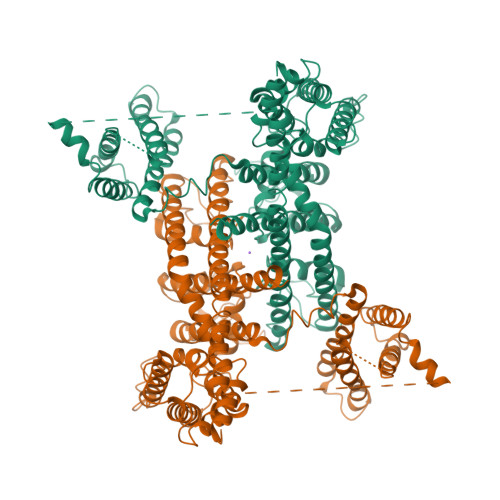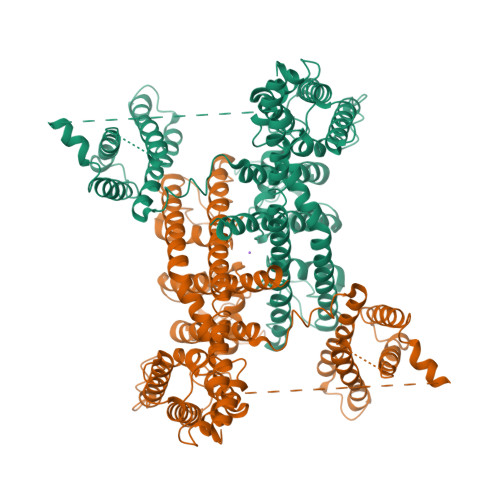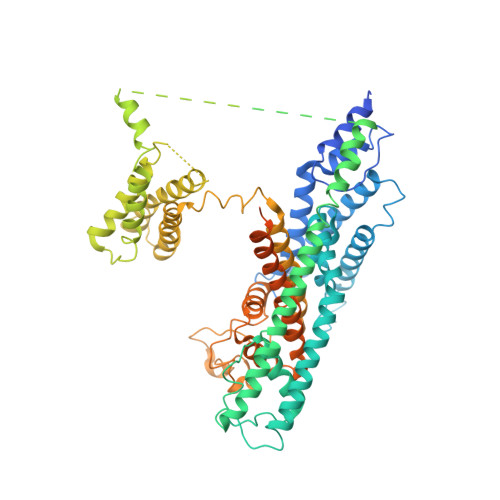Resting state structure of the hyperdepolarization activated two-pore channel 3.
Dickinson, M.S., Myasnikov, A., Eriksen, J., Poweleit, N., Stroud, R.M.(2020) Proc Natl Acad Sci U S A 117: 1988-1993
- PubMed: 31924746
- DOI: https://doi.org/10.1073/pnas.1915144117
- Primary Citation of Related Structures:
6V1Q - PubMed Abstract:
Voltage-gated ion channels endow membranes with excitability and the means to propagate action potentials that form the basis of all neuronal signaling. We determined the structure of a voltage-gated sodium channel, two-pore channel 3 (TPC3), which generates ultralong action potentials. TPC3 is distinguished by activation only at extreme membrane depolarization (V 50 ∼ +75 mV), in contrast to other TPCs and Na V channels that activate between -20 and 0 mV. We present electrophysiological evidence that TPC3 voltage activation depends only on voltage sensing domain 2 (VSD2) and that each of the three gating arginines in VSD2 reduces the activation threshold. The structure presents a chemical basis for sodium selectivity, and a constricted gate suggests a closed pore consistent with extreme voltage dependence. The structure, confirmed by our electrophysiology, illustrates the configuration of a bona fide resting state voltage sensor, observed without the need for any inhibitory ligand, and independent of any chemical or mutagenic alteration.
Organizational Affiliation:
Department of Biochemistry and Biophysics, University of California, San Francisco, CA 94158.



















